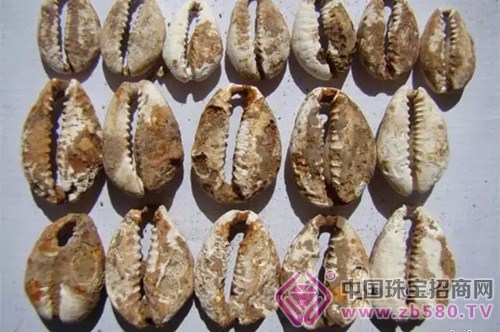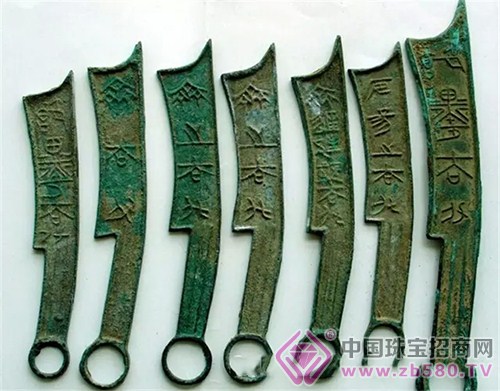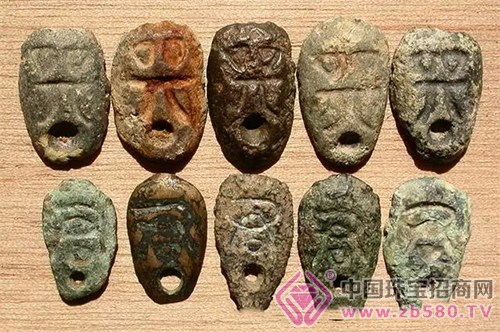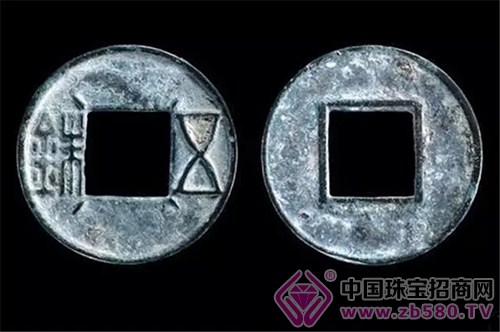In recent years, the collection of ancient coins has become increasingly hot. China's ancient coins have a long history and diverse materials, and they are very valuable in the history of the world's currency. Today, Xiao Pan will bring you the knowledge of ancient coins.

The earliest coin - Haibei
At the end of the primitive society, the earliest currency appeared was the physical currency. The nomadic people used the livestock and animal skins to realize the monetary function. The agricultural people used grains, cloth, agricultural tools, pottery, and sea shells. Zhu Yu and even pig heads acted as the earliest physical currency. But because cattle, sheep, pigs and other livestock can not be divided, the grain will rot, the pearl jade is too small, the knife and shovel are heavy, and finally the sea currency is concentrated in the real currency, since the Xia Shang has been used until the Spring and Autumn Period. Therefore, most of the words related to wealth and value in Chinese characters are related to the word "bei". Such as: expensive, capital, greed, poverty, wealth, purchase and so on.

The advent of the coinage era
Cloth currency
From the evolution of agricultural tools in the farming economy, the shapes and types are varied, and the characters are generally engraved. Until today, people still regard the currency as a symbol of Chinese coin culture, the emblem of the People’s Bank of China and the Renminbi. In the watermark pattern, you can see the existence of the cloth currency.
Knife
Knife-shaping, which originated from the economic tools of fishing and hunting, is the most primitive and beautiful in the country. Some casts have a profile that not only looks good, but also enhances the firmness to prevent wear.
Ring currency
The spinning wheel or the cymbal ring originating from the economic tools of the handicraft industry has ancient plaques, which are divided into round holes and square holes. With its unique charm and superior ease of use, the ring currency has gradually replaced other shapes of coins, laying the foundation for Qin Shihuang's unified currency system and for determining the shape of the coin as a square hole.

Ant nose
From the evolution of the Baycoin, the ant nose is small, meaning small money, commonly known as "ant nose money" and "ghost face money". The earliest existing gold coin is the "郢爰" (gold weighing currency) of the Chu State, which is in the shape of a plate. It is cast from a fixed gold plaque.
Half money
In 210 BC, Emperor Qin Shihuang promulgated China's earliest monetary law: "Golden coins and the world's currency", stipulated that half of the money in the circular square hole in the country, clearly marked the weight of money in Qian Wen, such as "Half two", "five é“¢", "four é“¢" and so on.
In half and two. Qian Wen's "half two" is consistent with the real weight. This kind of square hole money has since become the main form of Chinese currency, and it has been used in the early Republic of China.
The passage of circular square holes in the whole country is a major evolution from the chaotic shape to the normative shape in the history of ancient Chinese currency, and it was also the earliest currency in the world to be legally regulated by the government.
Five money
At the beginning of the Han Dynasty, the county was allowed to freely cast money. According to the "Han·Food and Food", the Emperor Wendi "except for stealing money to make the people cast," so "theft is like a cloud." This has caused confusion in the currency, and has enabled the wealthy businessmen to manipulate the coinage rights and to be richer than the emperor.
In 113 BC, Emperor Wu of the Han Dynasty set up the "Shanglin Sanguan", and the central government unified the casting of five baht money, which played an important role in stabilizing the political situation and economic development. For the next seven hundred years, the five-dollar money has been the legal currency of the dynasty. Because the five irons are light and appropriate, China’s “Five-Yuan†as the main form of Fangkong’s money also affects Japan, Annan, and North Korea.

Year money
According to research, the annual money began in the "Han Xing money" of Chengdu Li Shou in Sichuan during the Sixteenth National Day. The last year's money was Yuan Shikai's restoration of the imperial system of "the first year of Hongxian, when the ten copper yuan." The "Year of the Year" has been marked with the number of the year, indicating the time of casting, which makes it clear at the time of the examination. This is an improvement in the history of the development of coins.
Kaiyuan Tongbao
In 621 AD, Li Yuan was determined to reform the currency system, waste ancient and ancient money, and take the meaning of “opening up a new era†to uniformly create the “Kaiyuan Tongbao†money. This is the earliest money in China. After that, China’s copper coins no longer use money. The weight of the standard is commensurate with Tongbao and Yuanbao. It has been used in the "Treasure of the Republic of China" after the Revolution of 1911.
Royal book money
It was the emperor who wrote the money of Qian Wen. The earliest writing of Qian Wen was Song Taizong Zhao Guangyi. In the first year of Suihua (AD 990), he personally wrote the "Suihua Yuanbao" Qian Wen in the three books of truth, action, and grass, and opened the precedent for casting "the royal book money." There are three kinds of books in a year, which is unprecedented in the history of Chinese currency, and it is also the earliest "book money" in ancient China. During Song Zhezong's reign, Sima Guang and Su Dongpo wrote "Yuan Yu Tong Bao" with two calligraphyes, which is a unique cultural phenomenon in the Song Dynasty.
Banknotes
In the Northern Song Dynasty, due to the shortage of copper in the construction of money, the government made a large amount of iron money in some areas to make up for the shortage of copper coins. According to the "Song History", the cast iron money in Sichuan at that time always weighed 25 pounds and eight. Buying a Luo (silk) in Sichuan, you have to pay a hundred and thirty pounds of iron. Iron money is so cumbersome and inconvenient, the banknotes have been born in Sichuan. The banknotes of the Northern Song Dynasty mainly have diplomatic ties, and there are Huizi and Guanzi in the Southern Song Dynasty.
The banknotes of the Yuan Dynasty were called banknotes, and the banknotes were not allowed to be diverted. The circulation was also strictly restricted. However, at the end of the Yuan Dynasty, political corruption, the government had to rely on the indiscriminate issuance of banknotes to make up, causing prices to soar.
Silver ingot and silver dollar
In the Yuan Dynasty, the silver ingot was called the beginning of the "ingot". At the same time, the folks made copper money and cast the money of the Tongbao with the number of the year. In the Qing Dynasty, the copper coins were divided into Tongbao, Zhongbao and Yuanbao. The face value was different and the money bureau was different. Private business uses silver, small money uses money, money and silver in parallel. The types of banknotes issued in the Qing Dynasty were complex, with official banknotes and private banknotes. Official banknotes were issued by government financial institutions, and private banknotes were issued by private financial institutions.
During the reign of Emperor Guangxu of the Qing Dynasty, it began to purchase coinage machines abroad for the manufacture of silver and copper. The manufacturers were profitable and emulated.
Renminbi
The first set of RMB was issued by the People's Bank of China on December 1, 1948. It is praised as the “Four Great Kings†by the money collectors: Wan Wanyuan “Wo Ma Tuâ€, Wu Yiyuan “Mongolian Bagâ€, Wu Yiyuan “Jiande Cityâ€. The most valuable “Wan Ma Tu†is known as the “King of the Yuanâ€.
The second set of RMB 1 is also known as the “Huang Yijiaoâ€. The main view of the voucher is the combination of cultivated land and tractors. It shows a blueprint for the development of agriculture and modernization, witnessing the rise of a nation and the process of great rejuvenation.
It is worth mentioning: black big ticket, green vouchers, 1953 Wuyuan vouchers, 1956 Wuyuan vonets, and of course the new version of local gold.
Jacquard Fabric,Velvet Jacquard Fabric,Polyester Jacquard Fabric,Jacquard Upholstery Fabric
Tongxiang Luchang Textile CO.,LTD , https://www.luchangtextile.com